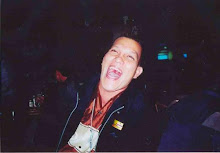Panay is an island in the Philippines located in the Visayas. Politically, it is divided into four provinces: Aklan, Antique, Capiz, and Iloilo, all in the Western Visayas region. It is located southeast of the island of Mindoro and northwest of Negros, separated by the Guimaras Strait. Between Negros and Panay lies the island-province of Guimaras. To the north is the Sibuyan Sea and the islands of Romblon; to the southwest is the Sulu Sea and the Panay Gulf.
The island has many rivers including Akean, Banica, Iloilo, and Panay.
Panay is the setting of the famous legend of Maragtas, which chronicled the arrival of the Malay race to the Philippine islands.
The island lent its name to several United States Navy vessels named USS Panay, mostly famously the one sunk in 1937 by the Japanese in the Panay incident.
Folkloric legends recorded in the Maragtas by Pedro Monteclaro says ten BorneanAti, cultivated the land, and renamed the island Madya-as. They divided it into three communities: Irong-irong, Akean (which includes the CapizHamtik. datus landed at a site now known as San Joaquin town in Iloilo province. They purchased Panay from the area), and
Capiz, which was part of Aklan in pre-Spanish times, was one of the early settlements of the Malayas, centuries before the coming of the Spaniards to the Philippines. It was part of the Confederation of Madjaas, formed after the purchase of Panay by the Bornean datus from the Negrito king named Marikudo.
When the Spaniards led by Miguel López de Legazpi came to Panay from Cebu in 1569, they found people with tattoos, and so they called it Isla de los Pintados. How the island itself came to be called Panay is uncertain. The Aeta called it Aninipay, after a plant that abounded in the island. Legend has it that Legazpi and his men, in search of food, exclaimed upon the island, Pan hay en esta isla!. So they established their first settlement in the island at the mouth of the Banica River in Capiz and called it Pan-ay. This was the second Spanish settlement in the Philippines, after San Miguel, Cebu.
Panay received its present name from Spanish officials who named the island after one of its earliest settlements, the town of Pan-ay in the province of Capiz. It was, however, once referred as Aninipay by the indigenous aeatas and later Madia-as by the Malay settlers who first arrived in the island in the 12th century.
The Ten Bornean Datus Epic refers to the ten chieftains who allegedly ventured to the Island of Panay boarding a boat called balangay (or barangay) to evade the tyrannical ruler of Borneo, Datu Makatunaw. The datus, believed to be the fathers of precolonial Philippines, were the following: Datu Puti (and wife, Piangpangan), Datu SumakwelDatu Bangkaya (and wife, Katurong), Datu Paiborong (and wife, Pabilaan), Datu Paduhinogan (and wife, Tibongsapay), Datu Dumangsol, Datu Libay, Datu Dumangsil, Datu Domalogdog, and Datu Balensuela. (and wife, Kapinangan),
According to this hoax, upon the arrival of the datus, the local inhabitants of the islands, the Aeta, grew terrified but the diplomatic Datu Puti said to Marikudo, the chief of the natives, that they had peaceful intentions. Later both parties entered into a trade alliance. Marikudo invited the datus to a feast, during which the ten chiefs negotiated the purchase of Panay Island for a golden salakot. Since the Aetas found the land overwhelmingly vast for them, they retreated to the forest, leaving the Datus with the land which they divided among themselves (namely Aklan, Irong Irong and Hamtik), leading to the birth of Philippine population and culture.
However, recent studies discovered the irregularities of the said legend, and thus, it must not be believed as a reliable source of facts on precolonial Philippines.
Due to the rapacity of the ruler of Borneo, named Datu Makatunaw, ten datus ventured to escape his grasp by boarding their long ships called barangays in order to seek out new lands. These men, whose names were Datu Puti, Datu Sumakwel, Datu Bangkaya, Datu Paiborong, Datu Paduhinogan, Datu Dumangsol, Datu Libay, Datu Dumangsil, Datu Domalogdog, and Datu Balensuela, eventually became the founders of the pre-colonial Philippine civilization. Upon sailing the seas, they in time reached a couple of islands called Panay and Sinugbuhan. These islands were under the rule of an Aeta “big-man” named Marikudo. These pygmy-like bands that practiced hunting and gathering as well as slash and burn farming (kaingin), was initially in terror of the Borneans. However, Datu Puti, who was the leader of the group, sought a peaceful alliance and was therefore welcomed by the Aetas. Immediately, they forged trade relations with the natives exchanging their combs, hatchets, knives and copper swords (called kris) to the Aetas’ deer horns, boar teeth, bamboo baskets, and various maritime products.
--To commemorate the new alliance, Marikudo invited his new associates for a feast under the thick, broad branches of his dapdap and the bounteous food was laid on banana leaves. The Borneans came wearing splendid accoutrements. The men wore kerchiefs wound 4 times around their heads, grandiose jewelry, sleeveless and collarless vests and various shirts. The women wore their heads parted in the middle and knotted in two like horns of a cow’s calf perched on each ear. They had long sleeved blouses and they had long, ornately colored skirts called tapis.
--In this feast, the Datus negotiated the purchase of land and since the Aetas thought that the island was too large to farm, they agreed. The Aetas, who preferred the cover of forests and mountains, retreated to such areas (where they can still be found today), while the Datus divided portions of the island and thus founded the various clans of the Philippine culture.

No comments:
Post a Comment